European larch: description and varieties, planting and care
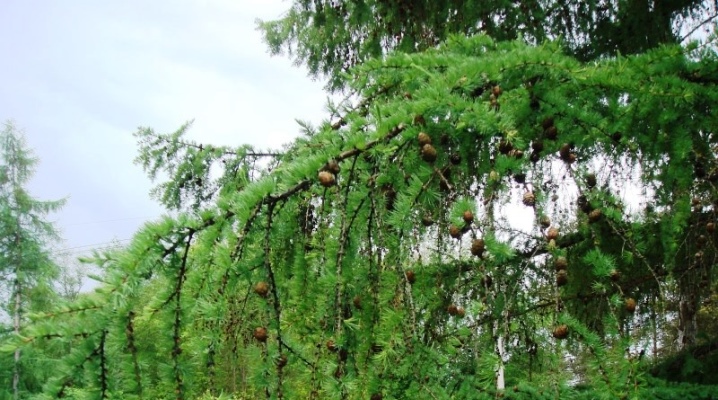
Conifers can be a spectacular decoration for any garden. They are both unpretentious and demanding in terms of care and maintenance. All the efforts of the owners will bring good results - they will grow very beautiful, solid plants, from which it will be impossible to take your eyes off. A unique aroma comes from coniferous plantings, which many people are in love with. Today we will take a closer look at the chic European larch and learn how to care for it according to all the rules.
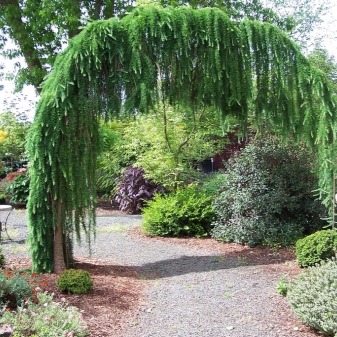

Peculiarities
Otherwise, European larch is called falling. It belongs to the pine family. In its natural habitat, it grows in the mountains of Central Europe at an altitude of 1000-2500 m above sea level.
European larch is a tall coniferous tree, the needles of which fall off with the onset of winter cold. The trunk of this green beauty has an even structure. The sizes of older specimens sometimes reach 25-35 m. The average trunk diameter of a luxurious European larch is 1 m.
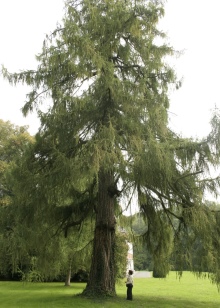

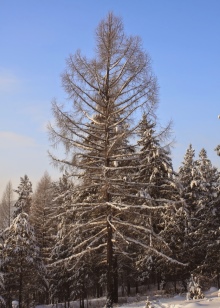
Falling larch is considered one of the fastest growing. Every year it can add 50-100 cm. It is worth noting that the fastest growth rates occur during the period when the tree turns 80 to 100 years old.
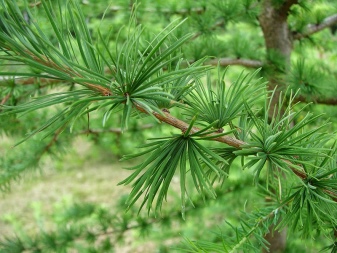
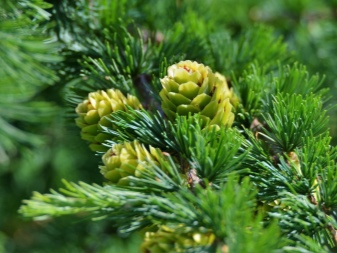
The young tree has a narrow crown. It can be conical or pin-shaped, and an irregular shape is often observed. The branches of a tree are either horizontal or falling with ascending tips - the description of different specimens may differ.
Young shoots of European larch are usually neat and slender. They fall beautifully from slightly raised skeletal branches. The bark is distinguished by a yellowish or gray-yellow tint. Has a characteristic smooth texture. Over the years, the bark can begin to become covered with impressive and noticeable cracks, acquiring a brown color.
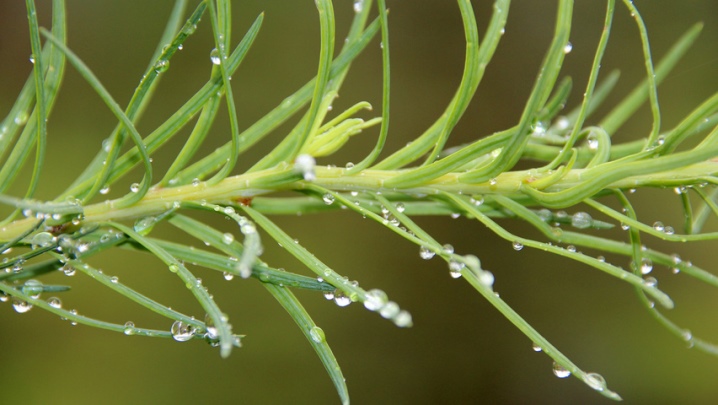
The needles of this tree have a bright green color. It is flat and soft. The needles are collected in a kind of neat bundles of 30-40 pieces on short shoots. In the fall, it inevitably turns golden yellow, after which it falls off. In the winter season, this chic culture can be recognized by the branches of the nodal species.
The flowering of European larch is particularly attractive, which makes it stand out among other coniferous genera. In spring, golden male cones with a round structure appear on this tree simultaneously with young needles. These elements are found on short, leafless shoots, mainly in the lower part of the branches.

This beautiful, solid tree can live up to 500 years. The oldest specimen recorded at the official level was 986 years old.
The frost resistance of this tree, unlike other conifers, is not the highest. It is important to take this feature into account before getting to know the European larch better. If you do not provide the plant with a high-quality and reliable shelter from frost, it will be able to overwinter normally only in zone 4. Certain varieties are even more demanding on the ambient temperature.
Varieties
European larch is a truly chic, beautiful tree with impressive height.That is why the selection was initially aimed at breeding more modest, stunted varieties. Let's get to know them better.
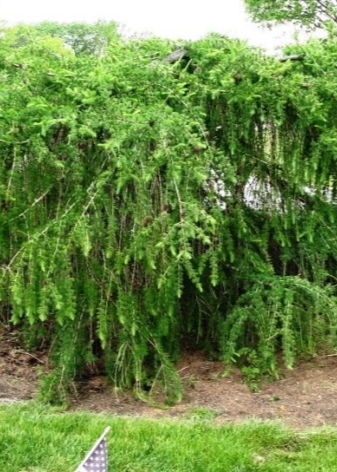
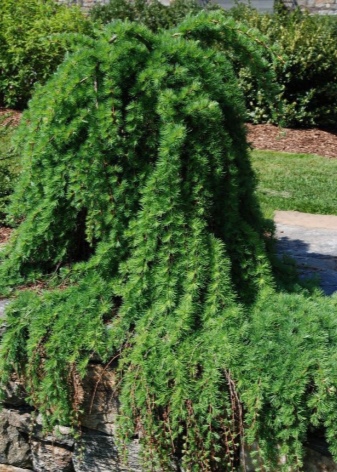
"Bullets"
A variety of Hungarian origin. It owes its appearance to Jose Mikolos. It was he who made the selection and grafting of a seedling with noticeably drooping branches discovered in the 90s.
The crying crown creates a kind of dense curtain, consisting of thin, graceful branches, decorated with needles of a light green shade. In autumn, this delicate color changes to golden.
At first, the shoots gently fall off the high point of the trunk, and then they simply spread over the surface of the soil.
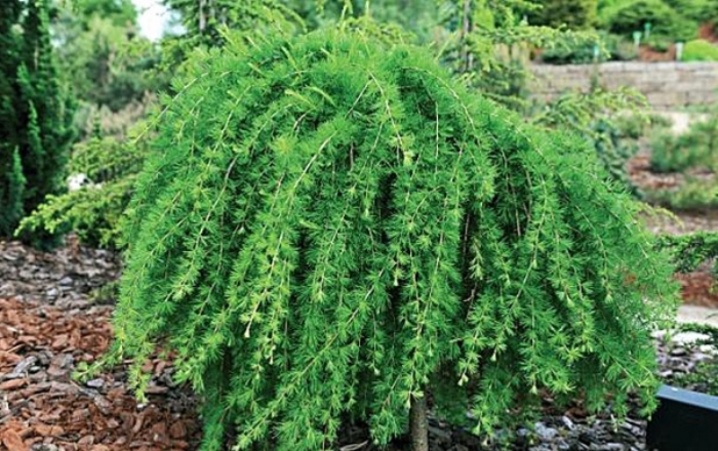
If this beautiful plant is left dormant, it will first form a kind of skirt surrounded by the trunk. Further, this detail will spread further - in different directions, creating a semblance of a soil patron. If, at an early age, a tree is pruned correctly and the shoots are guided correctly, it can be a real masterpiece. It is also possible to prevent branches from laying on the ground surface by making them shorter on a regular basis.
There is no need to talk about the height of this species of larch on the trunk. - everything here depends on the vaccination and the stock. Branches can cover whatever area the owners or landscape designer want to fill. Every year this tree will add 30 cm in height. When the "Bullet" is 10 years old, it usually reaches 4 meters.
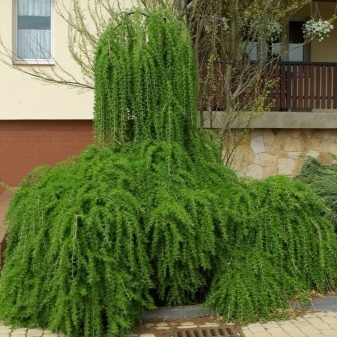
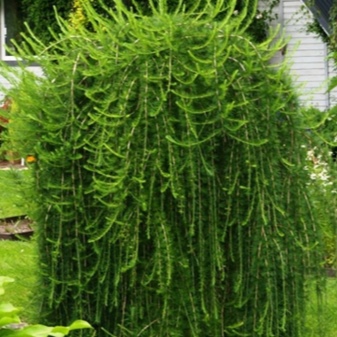
Little Bogle
This variety is native to Australia - Larix decidua Little Bogle. Rare cultivator. In a trunk, it is usually grafted at a very low height, due to which a semblance of a bent trunk is formed. When a tree turns 10 years old, its height can reach 130 cm. Little Bogle does not grow as fast as other coniferous varieties. The tree rarely grows more than 10-12.5 cm in height every season.
The shoots of this European larch are often twisted, creating a wide crown of an asymmetrical structure. From the outside, it may resemble an egg or an oval.
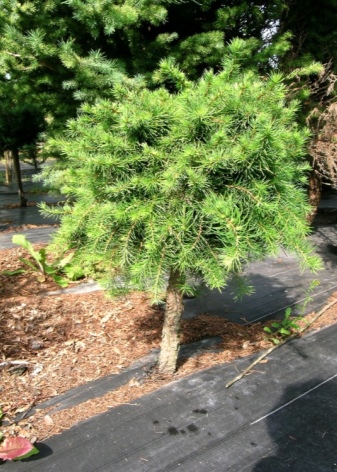
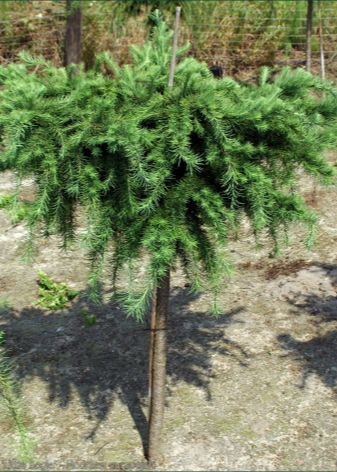
"Kornik"
This variety is dwarf. It grows grafted onto a stem. The total size of a coniferous plant directly depends on its length. The average height of the Kornik dwarf larch is from 1 to 1.5 meters.

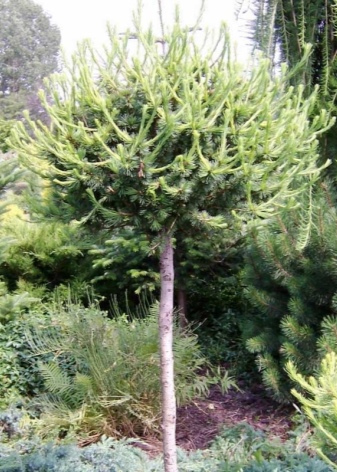
This tree looks like a small, lush ball with short, dense branches. The branches usually "look" upwards, decorated with needles of an emerald hue. It turns golden in autumn. In the winter season, the needles subside, but the planting grafted on the trunk does not lose its decorative qualities.

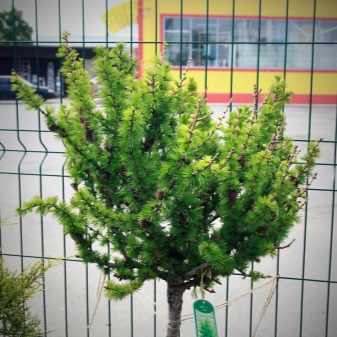
"Pendula"
Weeping form of European larch. It differs in thin shoots in structure, which spread unevenly along the trunk. They gently fall down. In height, this tree can reach an impressive height of 30 m.
This variety was first discovered back in 1836. Almost immediately, gardeners from Europe took a closer look at him.
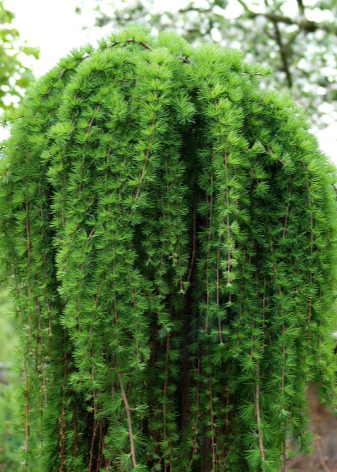
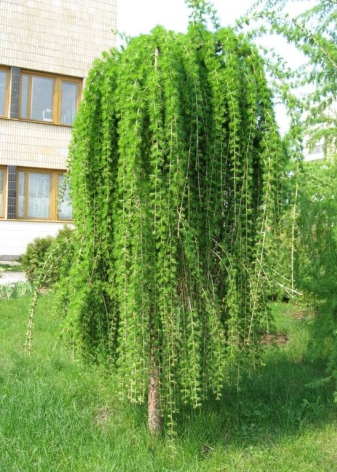
"Repens"
The well-known variety Larix Decidua Repens has been known for over 200 years and is very popular among gardeners. It is customary to plant its representatives on a trunk, the height of which will determine the size of the entire tree.
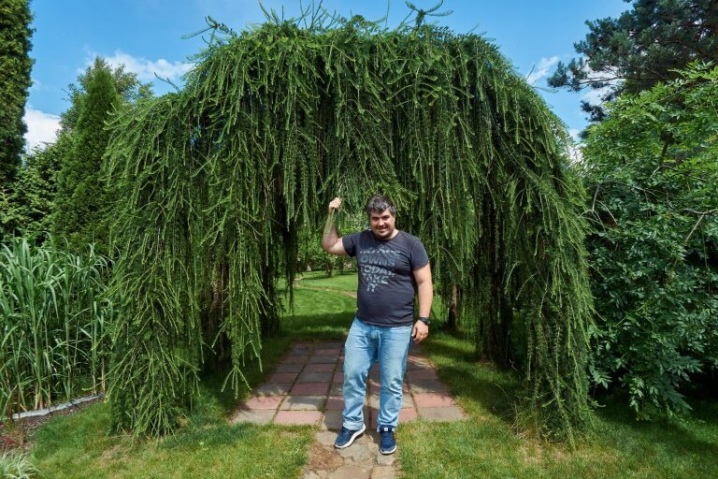
Beautiful trees of this variety can be of various shapes. This parameter depends on "in which direction" this or that branch went - first of all, they rise by 50 cm, and after that they begin to fall down.
If you prune a tree every year, remove branches sticking out in the wrong direction, then you can form a very beautiful and original plant in the form of a lush ball or dome with shoots that do not reach the ground surface.
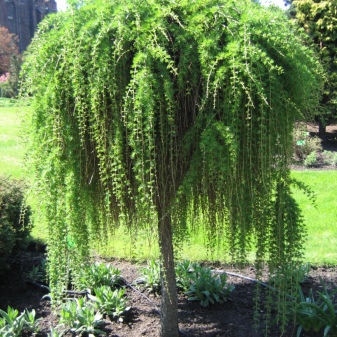
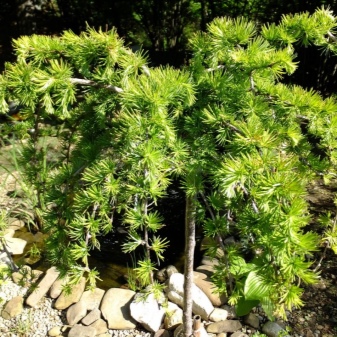
How to plant?
European larch must be planted according to all the rules. First, you should prepare a place for planting and seedlings. Let's consider how to do this.
- The planting pit will need to be prepared no later than 14 days before all procedures. If necessary, completely replace the substrate.It is made from deciduous humus, sand and peat in a ratio of 3: 2: 1. A drainage layer is required - 20 cm.
- Gravel or crushed brick is poured into the pit, then the rest of the volume (about 70%) is filled with the prepared substrate. Then fill with water until it stops absorbing.
- A plant seedling is best purchased in a nursery. In most cases, grafted larch trees are imported; they are bought in special containers.
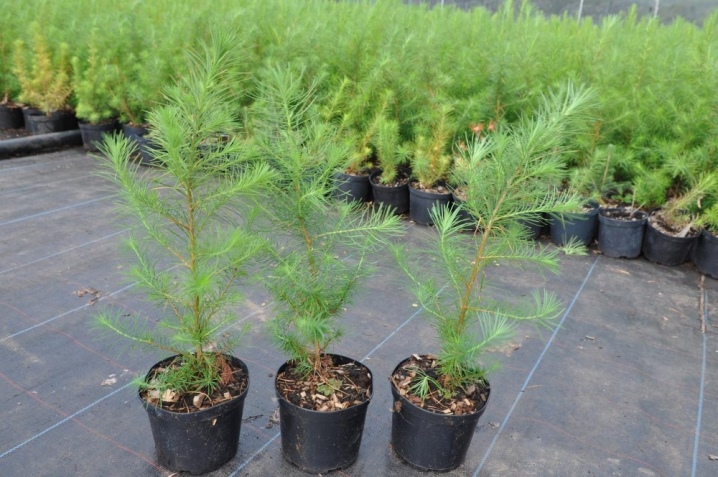
Then you can proceed to landing. In this case, it is necessary to disturb the roots to a minimum. It is important to be very careful with larch. Landing is carried out in the following sequence:
- part of the soil from the dug hole is removed using a shovel;
- a seedling is installed in the center;
- fall asleep with a substrate mixture, constantly pressing from the edges of the fossa to the center;
- a mound is made along the edge of the trunk circle so that moisture is retained;
- followed by abundant watering until the water is absorbed;
- when there is no moisture, the soil must be mulched with a layer of 5-7 cm.

How to take care of it properly?
After planting, within 7 days, you need to water the larch with a special stimulating agent for proper root formation. This step of leaving should not be skipped.
Good results will be brought by processing needles and branches with the solution "Epin" or "Zircon". Sprinkling should be abundant.
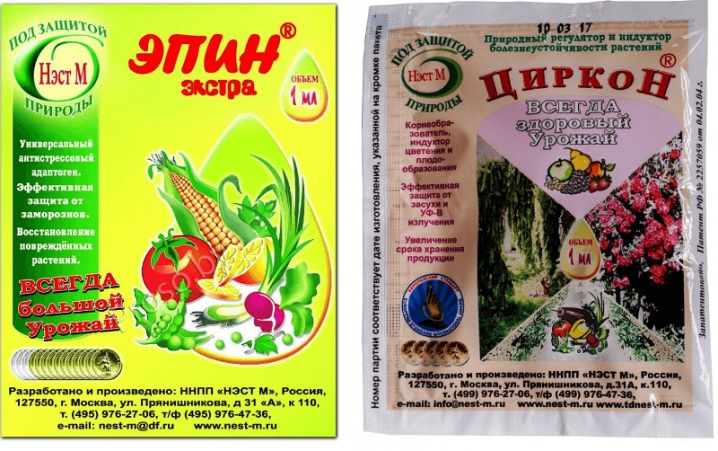
During the first year after planting (from February to April), cover the larch with a special netting to protect it from the shade (the canvas will not work). In the first year, the plant will not be able to receive much nutrition due to the truncated root system, because of which the needles can get overdried under the influence of the spring sun. In conifers, evaporation from the needles is carried out throughout the year, and when the rhizome system is still frozen in the spring, and the sun turns out to be quite hot, overdrying will inevitably occur. During this period, it is necessary to thaw the earthen lump under the plant so that it can feed on moisture. As a result, watering of conifers should be started from March 15th.

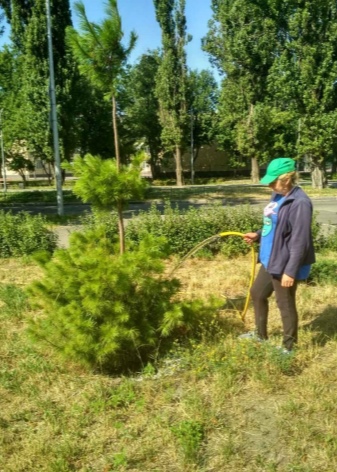
Use only warm water. The accumulated snow must be removed from the trunk so that the earth thaws as quickly as possible.
With the beginning of spring, you should give the tree special feeding. But it is necessary to select only those products that are made specifically for conifers. In no case should you use urea, manure or humus - they will ruin the larch.

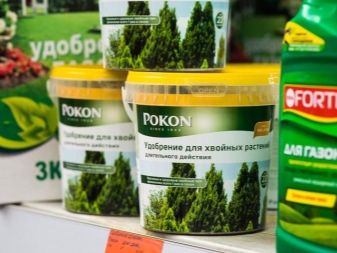
Reproduction
Many novice gardeners who were fascinated by the cultivation of European larch are interested in how it can reproduce. This tree is propagated either by seeds or by grafting. Cuttings root better than pine, but the difference is not too great and noticeable. Fans on their own to reproduce this coniferous tree in a vegetative way will not be able to, because even in a nursery, such events do not always end successfully. The percentage of cuttings that have been able to take root turns out to be very low, even if experienced specialists who are well versed in the relevant agricultural technology have taken up the job.

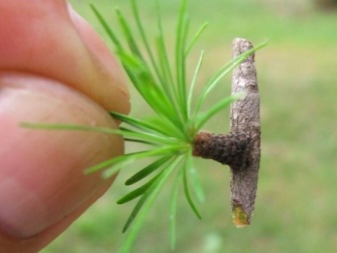
Vaccination is also not a procedure that an amateur can handle in such matters and matters. The easiest way to propagate European larch is with seeds. You can try to germinate them after stratification, but even here you do not need to rely heavily on the ability to bring the seedling to transplant in open ground conditions.
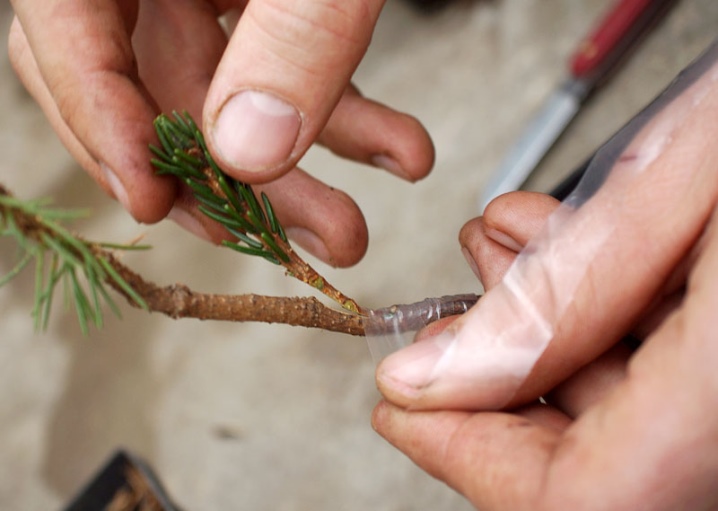
Use in landscape design
The culture in question is insanely popular when it comes to decorating parks, gardens (both private and public). Especially relevant today are the undersized specimens that were grafted on the trunk of the Larix Decidua larch shape.
In landscape design, European larch can take on the role of the main decoration, but we must not forget that this tree does not like the influence of low temperatures, frosts are destructive for it. Needles of this species can survive in 4 or 5 zones.
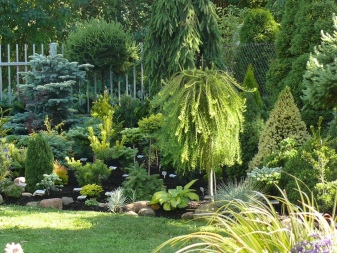
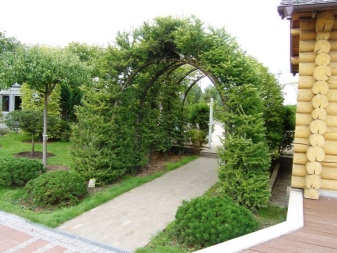
European larch can be planted right on the lawn, in the foreground of the entire landscape group. In all cases, the tree will draw a lot of attention to itself. Autumn needles, which acquire a luxurious golden hue, look especially interesting and fresh. Even in winter seasons, gnarled, knotty branches cannot harm the entire appearance of a garden or park. On the contrary, these details make the design more original and attractive.
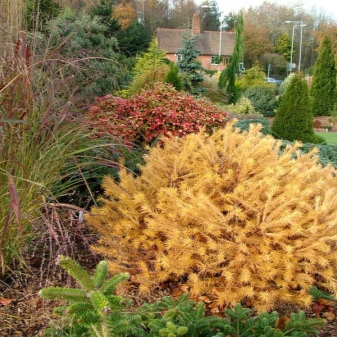
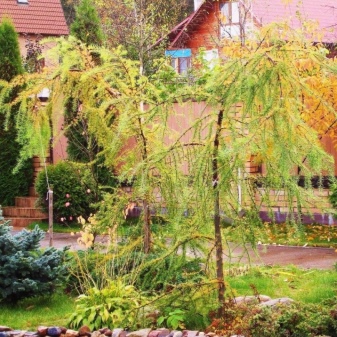
Larch is the culture that gives free rein to the imagination of the owner and the landscape designer. But we must remember that it is important to start building a tree at an early stage.
Only if this condition is met will it be possible to form a beautiful, unusual crown, while maintaining the decorative qualities of a green beauty.

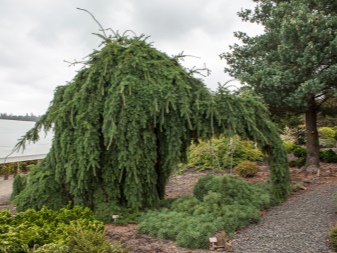
Helpful hints and tips
If you want to plant a chic European larch on your site, it is worth listening to some tips and tricks from experienced gardeners:
- if we are talking about a tree of the "Kornik" type, then a bole higher than 2 m is not recommended, since this can reduce the stability of the larch;
- when placing European larch on the lawn, it is important to remember that in the fall the latter will definitely be sprinkled with fallen needles, which can only be removed with a special garden vacuum cleaner;
- when planting larch, it must be borne in mind that its root collar should be located flush with the soil surface or slightly higher;
- with the onset of spring, all broken, withered or unhealthy branches must be removed, regardless of the age of the coniferous tree;
- it is important to properly fertilize European larch, top dressing must necessarily be specialized, intended specifically for conifers;
- it is necessary to plant this tree with the utmost care, it is important not to harm the green pet, otherwise it may die.
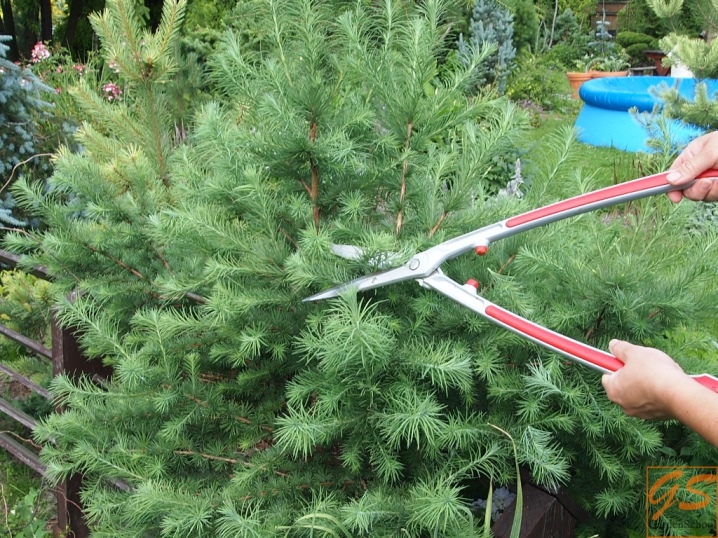
For information on what types of European larch are, see the next video.































































The comment was sent successfully.